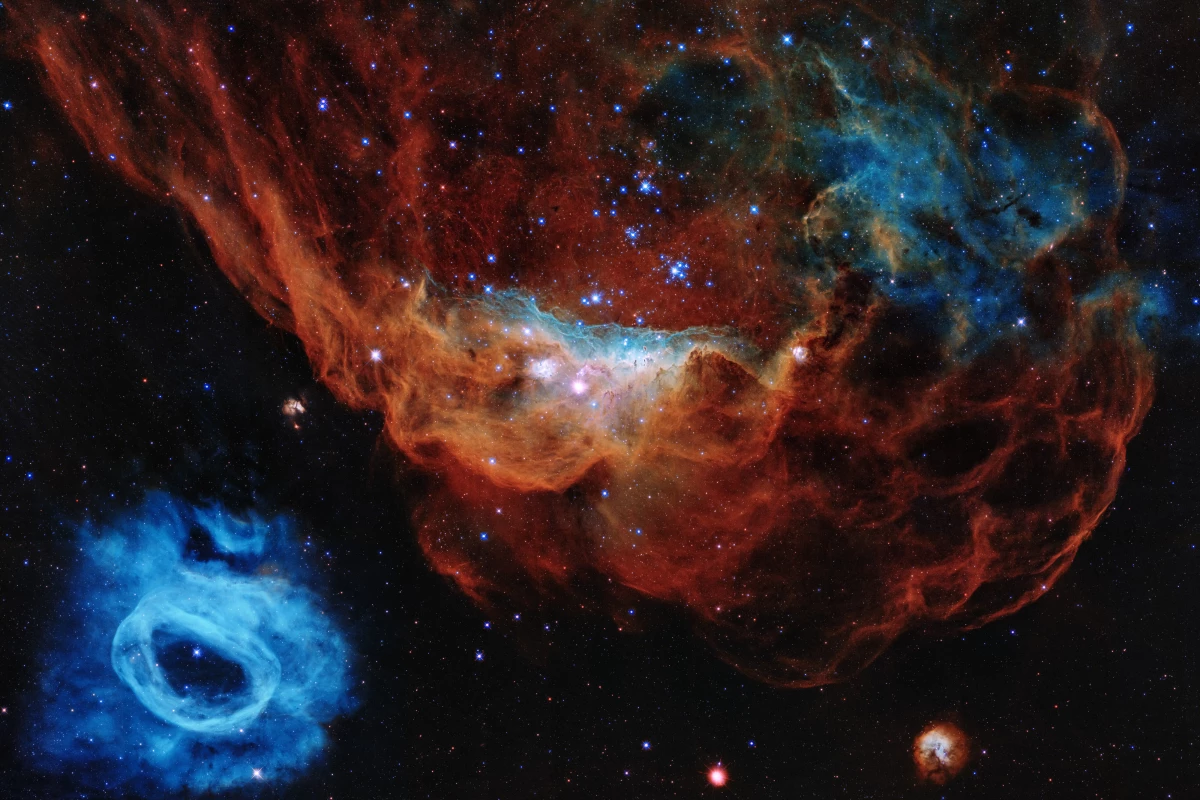The Hubble Space Telescope is celebrating its 30th launch anniversary with the release of a breathtakingly colorful portrait of two star forming nebulae - collectively nicknamed the "Cosmic Reef" - located in a nearby galaxy orbiting the Milky Way. Despite a rocky start that kicked off with a potentially mission ending complication, the telescope is still going strong, and continues to reveal the wonders of the universe in stunning detail.
The Hubble Space Telescope was launched on April 24, 1990 aboard the Space Shuttle Discovery. Unknown to the five-astronaut crew who deployed the bus-sized telescope, Hubble had been created with a potentially mission-ending flaw. It’s primary mirror had been partially shaped by an improperly calibrated tool, which created a spherical aberration in the surface. This caused the first images taken by the very new, and very expensive telescope to come out blurry.
Thankfully, the crew of the Space Shuttle Endeavour were able to remedy the issue and upgrade a number of other systems during a grueling rescue mission. A total of five shuttle missions were launched to service, repair and upgrade the telescope at massive cost, but it has most definitely been worth it.
Hubble has peeled back the secrets of the universe, revealing a cosmos burning with creation and destruction on a massive scale. According to a release from the European Space Agency, the telescope has made a staggering 1.4 million observations, which have fueled the creation of 17,000 peer-reviewed scientific papers.
The newly released image is a perfect example of the dramatic scenes that Hubble has captured over the course of its 30-year journey exploring the universe.
Two nebulae are detailed in the visible-light image – the bright blue NGC 2020, which is located on the left of the image, and the larger NGC 2014, which dominates the rest of the piece. This dramatic scene unfolded some 163,000 light-years from Earth in the Large Magellanic Cloud – a satellite galaxy that orbits the Milky Way. The bright blue stars that stud the image have a mass around 10 times that of our Sun. These leviathans blast out intense streams of radiation and stellar winds that push away the surrounding cocoon of gas from which they coalesced.
Because of their massive size, these stars will live relatively short lives, at least in cosmic terms – just a few million years compared to the 10 billion years lifespan of yellow dwarfs like the Sun. But, in that time, they dramatically shape their surroundings.
The red cloud made of hydrogen gas and dust that dominates the image is in the process of being forced outwards by winds emanating from a concentration of energetic young stars to be found near the center of the image. As the gas moves farther into the void, it forms bubbles. Over many thousands of years this has made the nebula look like a piece of coral, hence NGC 2014’s nickname - the "Brain Coral."
While the Brain Coral is shaped by the influence of multiple stars, the smaller, blue NGC 2020 Nebula located on the left of the image is being sculpted by a single enormous stellar body roughly 15 times the mass of our Sun, and 200,000 times as bright. It belongs to a rare family of stellar bodies called Wolf-Rayet stars. This particular stellar powerhouse may be just a few million years away from ending its life in a dramatic supernova.
The surrounding cloud comprises oxygen expelled from the surface of the star, which has been heated to a temperature of 11,000 °C (19,800 °F). causing it to glow a vivid blue.
Hubble has allowed us to stare back into the distant past, and observe the magnificent structures that populate our often strange, and always beautiful universe. Eventually, Hubble will be forced into retirement as it starts to show its age, and new cutting-edge telescopes are launched.
But that’s a problem for a different time. The old master has years of life left in it yet.
The video below offers a 3D animation of the Cosmic Reef.
Source: ESA




